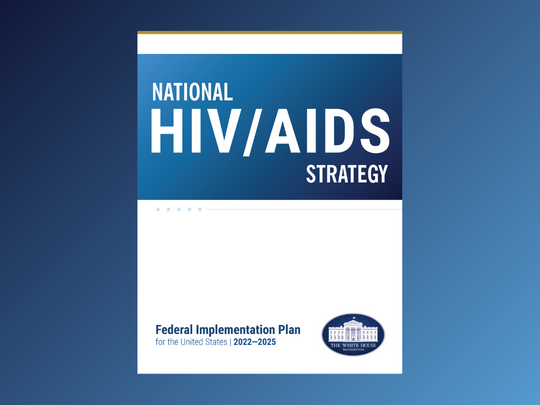ONAP’s Harold Phillips Speaks to Medical Students about EHE & NHAS
Topics

In December, Harold Phillips, Director of The White House Office of National AIDS Policy (ONAP), spoke to medical students at the George Washington University School of Medicine and Health Sciences 9th Annual Clinical Public Health Summit on HIV. The summit, co-created in partnership with NASTAD (National Alliance of State and Territorial AIDS Directors) offers medical students the chance to develop innovative project proposals that support the Ending the HIV Epidemic in the U.S. (EHE) initiative’s goals and the updated National HIV/AIDS Strategy (2022 – 2025) (NHAS).
Mr. Phillips spoke about the status of the EHE initiative, federal agency efforts to implement the NHAS, and the role of clinicians in ending HIV. He discussed the need to expand the definition of the HIV workforce to create larger care teams and the importance of expanding the scope of practice for healthcare professionals such as pharmacists and nurses. Mr. Phillips also emphasized the need to continue diversifying and training the workforce to ensure health care professionals are key implementers of efforts to combat stigma and discrimination.
During first-year summits, medical students showcase novel ways to address HIV that are backed by science and informed by policy. Summits are foundational to the clinical public health curriculum for medical students at George Washington University. These multi-day events serve as an opportunity for students to present projects aimed at addressing real-world public health concerns, such as HIV. From experiences in summits, students gain applicable knowledge in public health principles, critical thinking, teamwork, leadership, community engagement, and the translation of research into applied practice.
This Year’s HIV Summit
For this year’s HIV Summit, first-year medical students were divided into eight regional workgroups representing Arizona, California, Indiana, Iowa, Maryland, Mississippi, Tennessee, and Washington, DC. Students worked collaboratively with peers, regional experts, and senior officials to consider the unique HIV-related epidemiology, trends, health care environment, social determinants of health, and opportunities in their assigned state to appropriately tailor interventions they proposed.
Proposals to address HIV in each of these regions included recommendations to address the four EHE pillars—diagnose, treat, prevent, and respond. Students suggested the development and use of various people-centered approaches, such as apps, telehealth, live chat boxes, mass texting services, syringe services programs, mobile clinics, incentives, and kiosks, to deliver HIV prevention and treatment to people who need them most. Additionally, projects highlighted the need for large-scale change—such as expanding scope of practice for health professionals like pharmacists and other health practitioners (e.g., primary care physicians)—to improve accessibility to HIV care and enhance health equity.
HIV Summit and National HIV Activities
Lessons learned through HIV Summits closely align with EHE and NHAS efforts that have the overall goal of addressing health disparities and ending the HIV epidemic in this country. At the forefront of providing care to people, clinicians have unique opportunities to prevent HIV and improve health outcomes. Projects presented at this year’s summit were inspirational; the diligent work students, or tomorrow’s doctors, undertook for this event is a reminder of the enthusiasm needed to address and end HIV domestically.